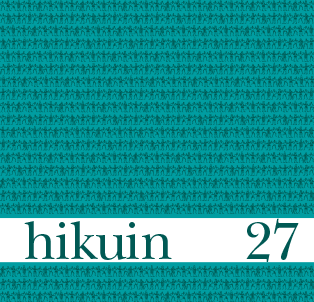De dødes landskap
Måtte man begraves ved sognekirken i middelalderen?
Resumé
The landscape of the dead.
Was burial at the parish churchyard an obligation in the Middle Ages?
By A. Jan Brendalsmo
Too often one finds that scientists doing research on the skeletal material found in parish churchyards draw firm conclusions about the people who once inhabited the adjoining areas. This probably arises from the assumption that it was obligatory in the Middle Ages, after the establishment of geographically delimited parishes, for people to receive burial at the local parish church. However, analyses of contemporary written sources concerning the see of Nidaros in Northern Norway shows that this cannot have been the case. The only thing that can be stated with certainty is that all law-abiding Christian members of society were to receive burial at a church, while those who had committed certain severe crimes were to be buried “where sea meets land”. Furthermore, it seems that common and more or less private cemeteries coexisted in the area throughout the Middle Ages, and that the location of a particular individual’s grave depended to a large extent on the social and economic standing of the deceased, rather than on his or her place of domicile. As a result, the author argues that – in addition to the familiar (and later) geographical parish – there were two other kinds of parish in the Middle Ages: the “social parish” and the “religious parish”. The main conclusion is thus that the “landscape of the dead” reflects the complexity of the world of the living, and that it is not possible, a priori, to regard the physical remains found in a local churchyard as directly representative of the area’s contemporary population.
Referencer
Andersen, Per Sveaas: Samlingen av Norge og kristningen av landet 800-1130. 2. opplag. Oslo (1977) 1995.
Andrén, Anders: Den urbana scenen. Städer och samhälle i det medeltida Danmark. Acta Archaeologica Lundensia, Series in 8° Nr 13. Bonn & Malmö 1985.
–:Avgränsning eller tillhörighet? – olika principer för social organisation. Rapport fra den første nordiske TAG-konference i Helsingör, 15-17 november 1985. Red. Kristian Kristiansen. København 1987, s. 23-32.
Aslak Bolts Jordebok. Utgitt ved Jon Gunnar Jørgensen. Oslo 1997.
Brendalsmo, A. Jan: Trøndelags middelalderske kirkesteder. Dr.avhandling ved Universitetet i Oslo (in prep.).
Brink, Stefan: Sockenbildning och sockennamn. Studier i äldre territoriell indelning i Norden. Acta Academiae Regiae Gustavi Adolphi LVII, 14. Uppsala 1990.
Brundage, James A.: Medieval Canon Law. London & New York 1995.
Carelli, Peter: We Are Not All Equal in the Face of Death. Profane Graves in Medieval Lund. Meddelanden från Lunds universitets historiska museum 1993-1994. New Series Vol.10. 1995, s. 43-59.
CE = Catholic Encyclopedia. Ed. Charles G. Herbermann. New York 1913-14.
Dybdahl, Audun: Jordeiendomsforhold og godseiere i Trøndelag. Fra Aslak Bolt til Landkommisjonen. Steinkjer 1989.
Falk, Hjalmar & Alf Torp: Etymologisk Ordbog over det Norske og det Danske Sprog. 3. opptrykk faksimile. Oslo/Gjøvik (1903-06) 1994.
F = Frostatingslova. Omsett av Jan Ragnar Hagland & Jørn Sandnes. Gjøvik 1994.
G = Gulatingslova. Umsett av Knut Robberstad. Oslo 1981.
Gunnes, Erik: Erkebiskop Øystein. Statsmann og kirkebygger. Oslo 1996.
Hagland & Sandnes se under F = Frostatingslova.
Lynch, Joseph H.: The Medieval Church. A brief history. London & New York 1992.
Lysaker, Trygve: Domkirken i Trondheim Bind III. Fra Katedral til sognekirke, 1537-1869. Oslo 1973.
Minois, Georges: History of Suicide. Voluntary Death in Western Culture. Baltimore & London 1999.
Morris, Richard: Churches in the landscape. London 1989.
Müller-Wille, Michael: Königsgrab und Königsgrabkirche. Funde und Befunde im frühgeschichtlichen und mittelalterlichen Nordeuropa. Bericht der Römisch-Germanischen Kommission, Band 63, 1982. Frankfurt am Main 1983, s. 349-412.
Nicolaysen, Nicolay: Om de kongelige begravelser i Norge efter hedendommen. (Norsk) Historisk Tidsskrift 1871, bind 1, s. 1-22.
Nilsson, Bertil: Död och begravning. Begravningsskicket i Norden. Tanke och Tro. Aspekter på medeltidens tankevärld och fromhetsliv. Red. Olle Ferm & Göran Tegnér. Studier till Det Medeltida Sverige 3. Stockholm 1987, s. 133-150.
–:De sepulturis. Gravrätten i Corpus Iuris Canonici och i medeltida nordisk lagstiftning. Bibliotheca theologicae practicae. Kyrkovetenskapliga studier 44. Stockholm 1989.
Norges Gamle Love V. Udg. Gustav Storm & Ebbe Hertzberg. Christiania 1895.
Olav Engelbrektssøns Jordebog. Udgivet ved Chr. Brinkmann og Johan Agerholt. Oslo 1926.
Reed, Ian, Jan Kockum, Kate Hughes & Paula Utigard Sandvik: Excavations outside the west front of Nidaros Cathedral in Trondheim. NIKU Oppdragsmelding 055. Trondheim 1998.
Sandnes, Jørn: Fylkeskirkene i Trøndelag i middelalderen. En del notater og detaljmateriale. Årbok for Trøndelag Nr. 3, 1969, s. 116-136.
Sandvik, Gudmund: Prestegard og prestelønn. Sarpsborg 1965.
Sheeny, Gerard, Ralph Brown, Donal Kelly & Aidam McGrath (eds.): The Canon Law. Letter and Spirit. London 1995.
Wienberg, Jes: Middelalderens Tønsberg, kirken og omlandet. Vestfoldminne 1991, s. 12-23.
–:Den gotiske labyrint. Middelalderen og kirkerne i Danmark. Stockholm 1993.
Downloads
Publiceret
Citation/Eksport
Nummer
Sektion
Licens
Forfatter og Forlag.





